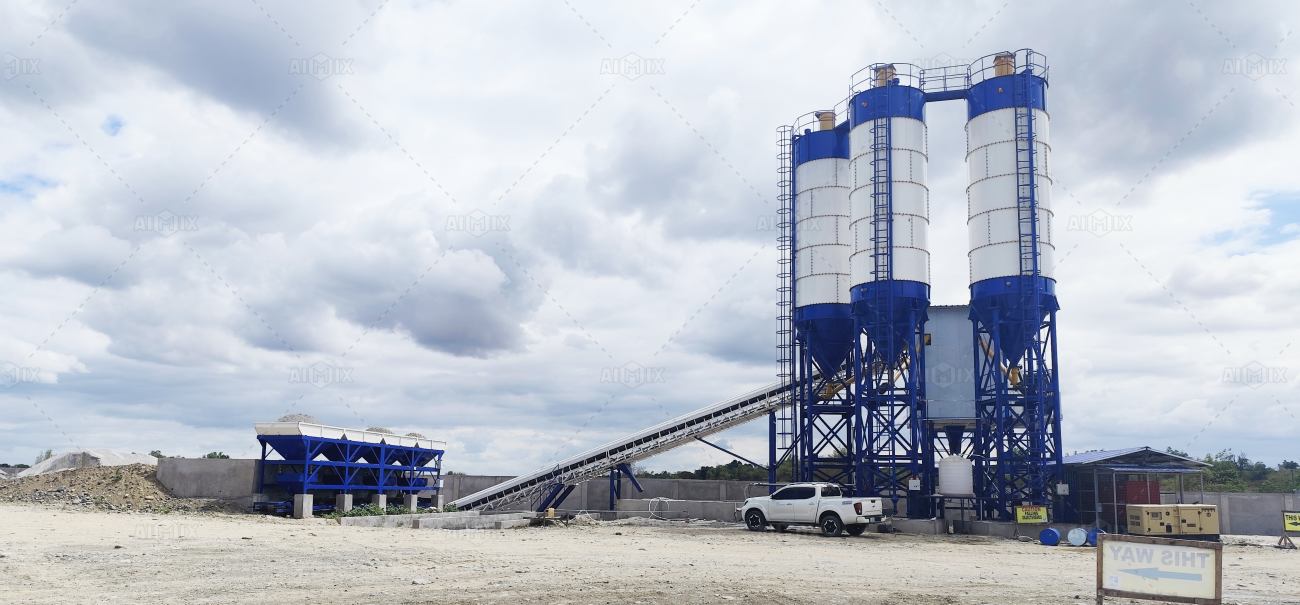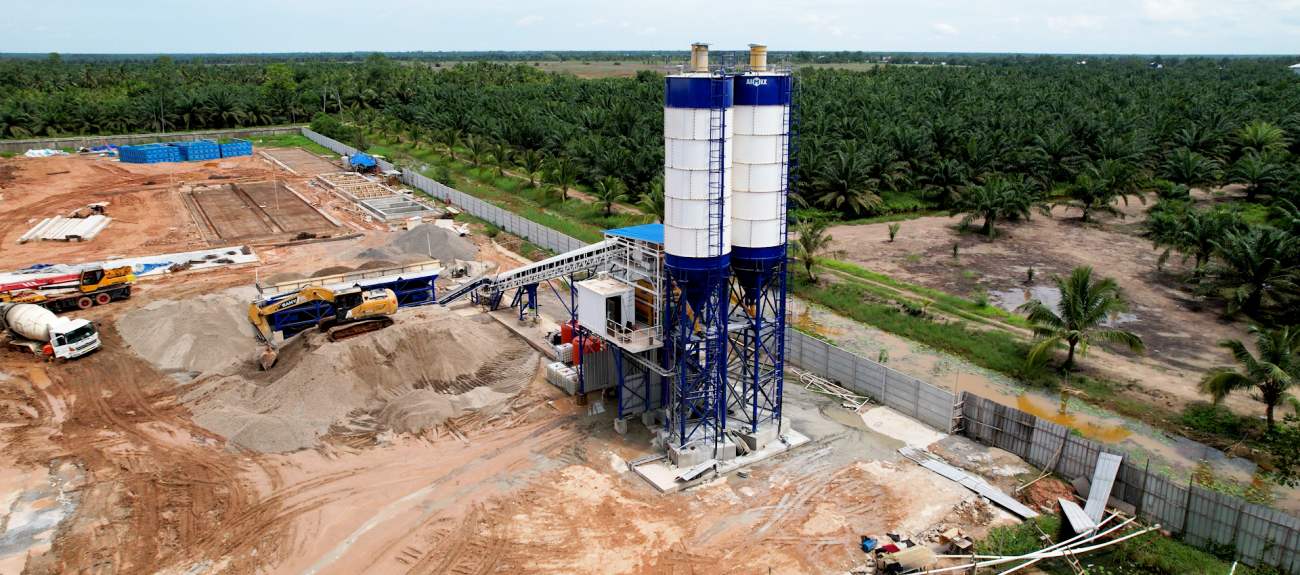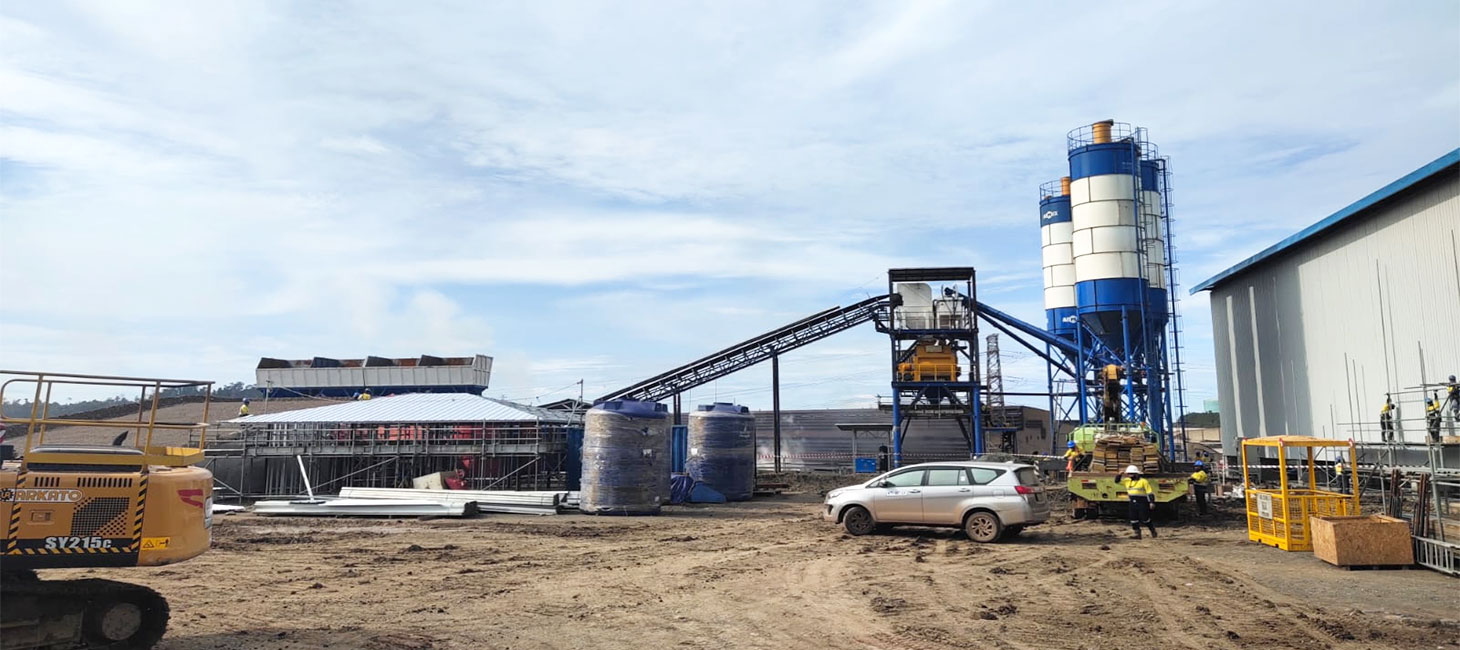In the rapidly expanding construction sectors of emerging markets, Ready Mix Concrete (RMC) is increasingly seen as a key to efficiency, quality, and scalability. As a result, demand for RMC concrete batching plants is surging across regions like Southeast Asia, Africa, the Middle East, and Latin America. However, one of the most critical considerations for any contractor or entrepreneur starting an RMC plant business is cost.
Understanding RMC plant cost trends in these markets provides valuable insight into budgeting, investment timing, and profitability. In this article, we examine the major cost factors, pricing patterns, and future outlook for RMC plants—especially in the context of international competition and the growing influence of China concrete batching plant manufacturers.

1. Why RMC Plants Are Growing in Emerging Markets
Emerging economies are experiencing a boom in infrastructure development, housing, urbanization, and industrial projects. Government initiatives for smart cities, highways, airports, and public housing are fueling an increase in demand for high-quality, time-sensitive concrete.
RMC concrete batching plants offer:
-
Faster delivery and placement
-
Consistent concrete quality
-
Reduced on-site labor
-
Better inventory and cost control
As local construction companies scale up, many are exploring the RMC plant business to internalize supply and reduce dependency on external ready-mix suppliers.
2. Key Factors Influencing RMC Plant Cost
While base prices provide a starting point, the total cost of an RMC plant depends on several critical variables:
A. Plant Type and Capacity
-
Mini/mobile plants (25–40 m³/h): $30,000–$70,000
-
Medium (50–75 m³/h): $80,000–$150,000
-
Large (90–120+ m³/h): $160,000–$300,000+
The higher the output, the more robust and costly the system—including mixers, aggregate storage, and control units.
B. Level of Automation
Automation is becoming a norm, even in developing regions. Plants with PLC control systems, SCADA software, and real-time monitoring are more expensive upfront but lower long-term labor and error costs.
C. Location-Specific Costs
-
Import duties and taxes
-
Transport and logistics to remote or rural areas
-
Infrastructure costs (electricity, water, foundation)
These factors can cause regional differences of 10–25% in overall RMC plant cost.

3. Cost Trends by Region
Southeast Asia
Countries like Indonesia, the Philippines, and Vietnam are experiencing massive growth in infrastructure and housing. Due to intense competition, RMC plant cost here is under pressure, with many buyers opting for compact, semi-automated models.
-
Trend: Mobile RMC plants gaining popularity
-
China concrete batching plant suppliers dominate due to lower pricing and fast delivery
Africa
Infrastructure funding from governments and international agencies (e.g., World Bank, China’s Belt and Road Initiative) is driving demand for RMC.
-
Trend: High interest in low-cost, easy-to-maintain batching plants
-
China concrete batching plant manufacturers are winning projects through affordable and scalable solutions
-
Many plants are imported and assembled locally to reduce shipping costs
Middle East
The Gulf region still demands high-end plants due to large-scale megaprojects, but emerging markets like Egypt and Iraq are seeking mid-tier RMC batching solutions.
-
Trend: Shift from manual to semi-automatic plants
-
Many buyers seek a balance between RMC plant cost and automation
Latin America
Brazil, Peru, and Colombia are seeing increased use of RMC concrete batching plants in urban development. However, economic volatility drives a strong focus on ROI and cost-efficiency.
-
Trend: Demand for plants with low maintenance and local service support
-
Financing remains a barrier for smaller players entering the RMC plant business
4. The Role of China Concrete Batching Plant Suppliers
China concrete batching plant brands like Aimix, SANY, Zoomlion, and XCMG are highly active in emerging markets. Their ability to offer:
-
Competitive pricing
-
Wide model ranges (mini to large-scale)
-
Fast lead times and shipping
-
On-site installation and training services
has made them the go-to suppliers in regions where RMC plant cost is a deciding factor. Additionally, many Chinese manufacturers now offer CE-certified equipment, appealing to international buyers who prioritize compliance.

5. Cost-Saving Tips for RMC Plant Buyers
Starting an RMC plant business in an emerging market doesn’t have to break the bank. Here are strategies to control and optimize plant costs:
-
Choose the right capacity: Avoid overpaying for output you don’t need.
-
Start with essential features: Add automation and storage later as you scale.
-
Buy modular or mobile plants: Easier to relocate and install.
-
Partner with local service agents: Reduces repair and maintenance delays.
-
Work with China concrete batching plant makers: Ideal for balancing cost and performance.
6. Future Cost Outlook
As demand increases and economies of scale improve, the average RMC plant cost is expected to become more competitive, especially for mid-sized and mobile models.
-
2025–2030 Forecast:
-
Broader adoption of AI-based control in mid-range plants
-
Continued price drops from Chinese suppliers due to automation in manufacturing
-
Increased localization (assembling Chinese components with local steel or labor)
-
Environmental regulations and green building practices may introduce new cost components, such as dust control systems or energy-efficient motors, but will also open up subsidy opportunities in some regions.
Conclusion
The RMC plant cost in emerging markets is shaped by a complex mix of global competition, local demand, and advancing technology. Whether you’re considering a small RMC concrete batching plant for urban infill or a high-output plant for mega projects, cost-effective solutions are increasingly available.
With Chinese manufacturers leading the way in affordability and flexibility, and regional markets investing heavily in infrastructure, now is an ideal time to enter or expand in the RMC plant business—as long as you plan wisely and choose the right supplier.